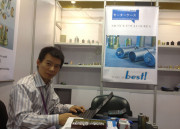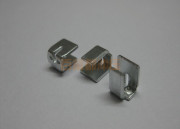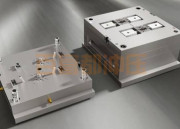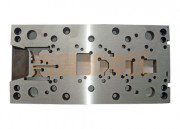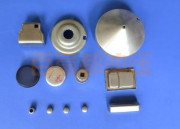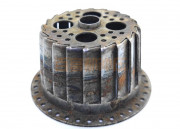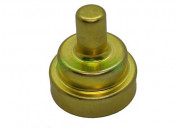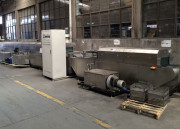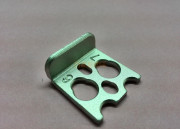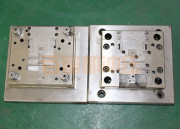Posted at 03/08/2022 , By deep drawing , Categories Blog,Industry , Comment Comments Off on How to solve the strain in the process of drawing die processing? By changing the characteristics of the contacts, the adhesive wear should be reduced to achieve the best results when solving the above problems. Let’s briefly analyze it below.
1. In terms of raw materials for forming workpieces, through surface treatment of the raw materials, such as phosphating, spraying or other surface treatments, a layer of non-metallic molds is formed on the surface of the forming materials, which can greatly reduce or eliminate the strain on the workpiece. This method is costly and requires additional production equipment and increased production processes. Although this method sometimes produces some effects, it is rarely used in actual production.
2. Adding a layer of film such as workpiece and mold PVC between the mold and the molding material can sometimes solve the problem of deep drawing.
For the assembly line passing mechanism, continuous film supply can be achieved. For the periodic production of stamping equipment, each production needs to add a layer of film, which affects the production efficiency. This method is generally more expensive and will generate a large amount of waste. For the production of small batches , Large-sized workpiece, it is best to use this method. For some smaller molding loads, solutions such as adding lubricants or adding EP additive lubricants can be used.
3. The contact characteristics of the stretched materials such as the convex and concave molds are changed by changing the surface treatment of the convex and concave mold materials or the surface treatment of the convex mold and the concave mold, or by selecting the appropriate mold material. Practical applications show that this is a cost-effective way to solve stretching problems.
In short, there are many ways to solve the problem of pulling on the surface of the die and the die. The specific situation should be determined according to the size of the workpiece, the amount of force, the production batch and the type of processing material.
Between the telescopic part and the mold, adding a layer of PVC and other films between the mold and the forming material can sometimes solve the problem of deep drawing.
For the assembly line passing mechanism, continuous film supply can be realized. For stamping equipment with periodic production, a layer of film needs to be added every time a workpiece is produced, which affects the production efficiency. This method is generally more expensive and generates a large amount of waste. For the production of small batches, large size workpieces, this method is best.
In terms of raw materials for forming workpieces, through surface treatment of raw materials such as phosphating, spraying or other surface treatment, a layer of non-metallic molds is formed on the surface of the forming materials, which can greatly reduce or eliminate the strain of the workpiece. This method is expensive, but also It is necessary to add additional production equipment and increase the production process. Although this method sometimes produces some effects, it is rarely used in actual production.
By changing the punch and die material or the surface treatment methods of punch and die, or by selecting appropriate die materials, the contact characteristics of the stretched material such as punch and die can be changed.
Practical applications show that this is a cost-effective solution to stretching problems.
Tie rod cracking remedy
(1), adjust the pressure of the pressing material and reduce the pressure.
(2) Adjust the stretching gap to make the gap larger and make the gap more uniform.
(3), adjust the radius of the die fillet. The corner radius of the die is too small, and the parts are easy to crack. Increasing the corner radius of the die can reduce the degree of cracking.
(4), adjust the punch radius.
(5), adjust the relative position of punch and die.
The above is about the content of the drawing die. The drawing die used is called the drawing die, abbreviated as the die. A drawing die is a special tool required for mass production. The deep drawing die is a very important die, and it is difficult to draw in batches without a qualified die. Advanced drawing processes do not require advanced dies and are therefore not possible. The tension process and the mold, the tension device and the tension material constitute the three elements of the tension process. Only when they are combined with each other can the tension be obtained. I hope the above can be helpful to readers.
Read More →

